Home | Front Page | Index | Blog | New | Contact | Site Map
Belleville
Food
Flowers
People
Grand Museums
Museums in Homes
Major Churches
Less known Churches
Former Churches
Small Churches
Statues, etc
Streetscapes
Modern Buildings
Les Gares
Fontainebleau
Roland Garros
Visitors
Sorority Time
EU Constitution
Seminars
Neuf Telecom
Tout Paris
Foto Show
Paris 1999
Paris 2005
Paris 2007
France 2007
Paris 2008
France 2008

Travel 2005
Berlin
Paris
Moscow
Russia
Athens
Travel 2004
Mexico 2004
Belize
Guatemala
Honduras
Costa Rica
Panama
Colombia
Ecuador
You can read other people's stuff about Paris in
Paris France,
Paris Guide,
Le Monde, and
Le Figaro.
For info on trains try SNCF
and Radio/TV: RFI | TF1 |
For at least two centuries and probably much longer there has been a violent, anti-clerical tendancy in Catholic countries. When the non-believers are persecuted by the believers it is only natural that if tables can be turned they will. The first such great upheaval in France was the revolution of 1789. Besides doing away with the monarchy it attempted to do away with the church. Many fine buildings were defaced and much great art lost. Napoleon's rise saved the church and in part was due to those who wanted to save the church.
Today's Paris has numerous fine buildings that were once churches. Fortunately for Paris and the world these building escaped the cruel and wanton desecration of Mexican anti-clericalism. There, particularly in Guadalajara, fine baroque treasures were in the 1930s painted over with monstrous "modern art". In Stalin's day he desroyed church after church. With the fall of the USSR and restoration of religious liberty and initiative in Russia many of these buildings have been reconstructed. Apparently Paris, never having lost its greatest treasures, has never seen the need to restore the relatively few it lost.
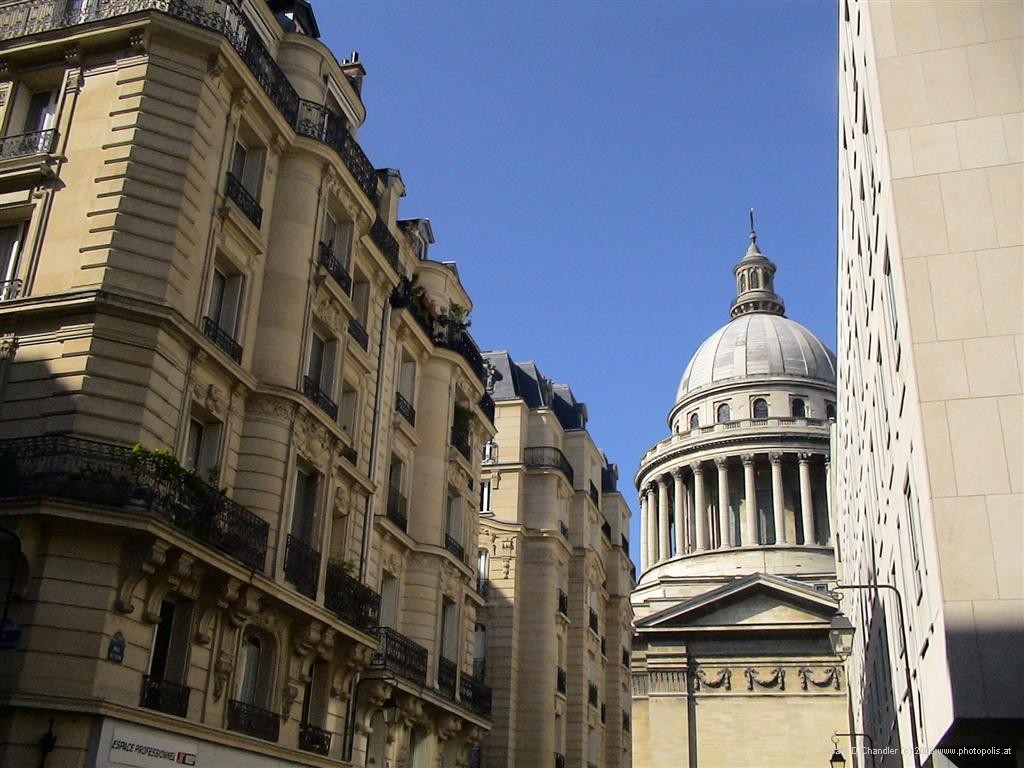
Pantheon at end of Street |
The Pantheon is now a grand mausoleum: the final resting place of the greatest of the great French. It was planned at the same time as the Revolution and its fate had as many twists as French history with its abandonment and restoration of the various monarchies.
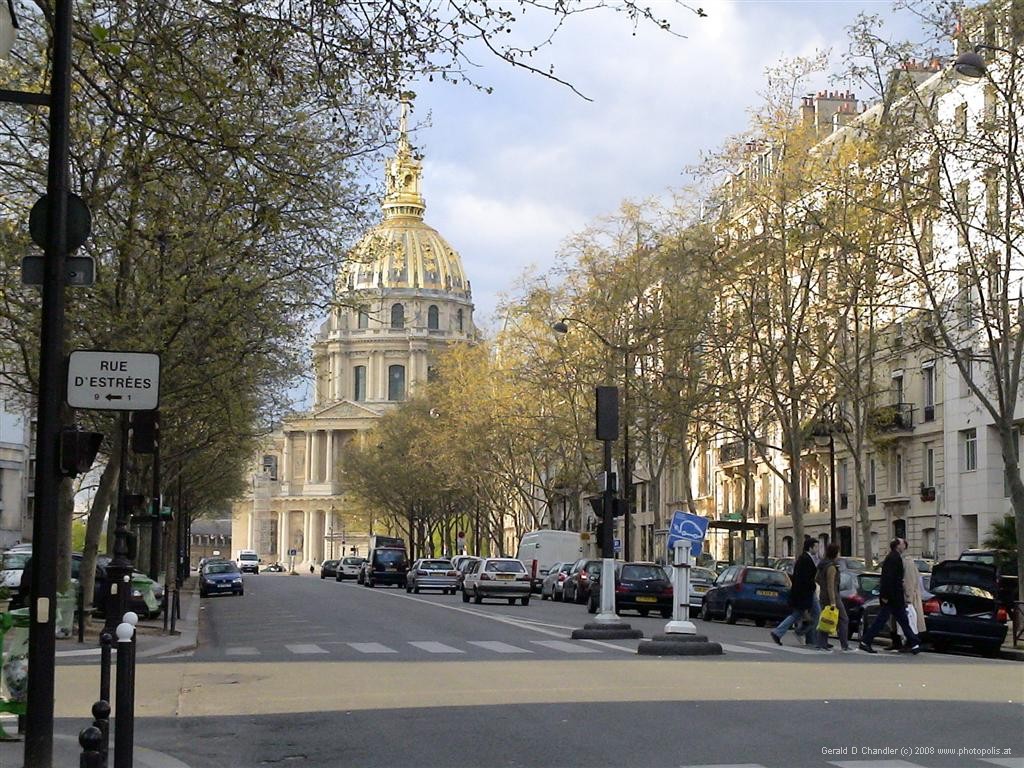
Eglise des Invalides |
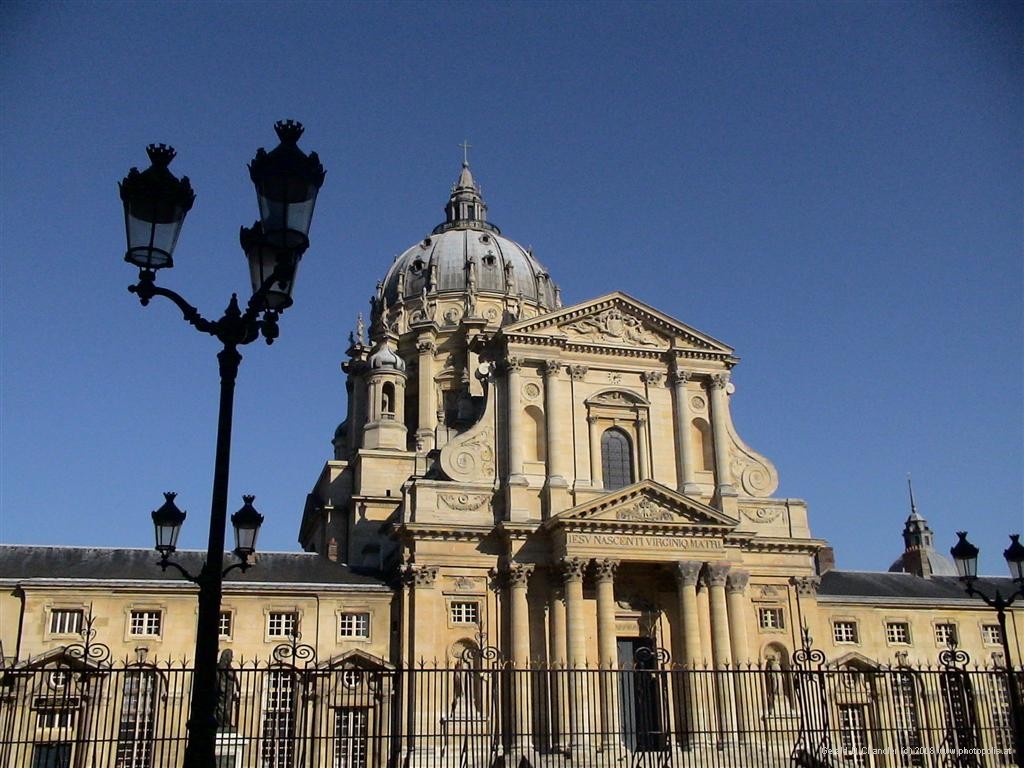
Val de Grace |
Val de Grace became a military hospital.in 1795, six years after the revolution. It was founded by Anne of Austria in thanks for the birth of a son. That son, Louis XIV, at the age of 7, in 1645 laid the first stone. Its dome is one of the oldest in Paris.
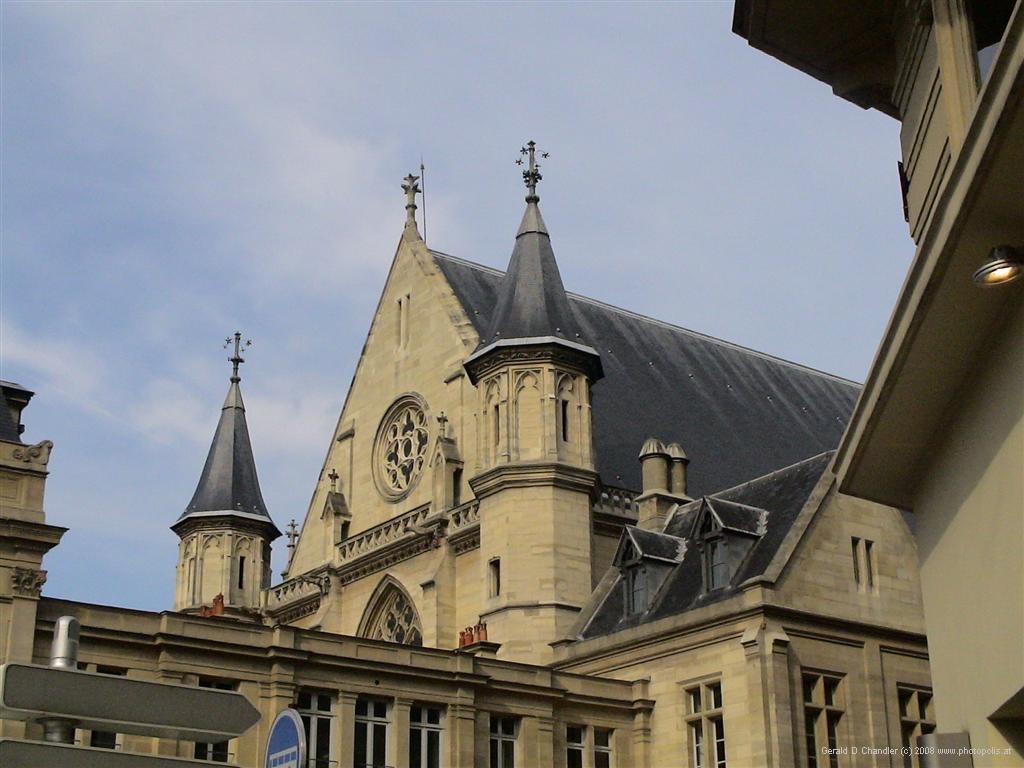
Arts et Métiers Library |
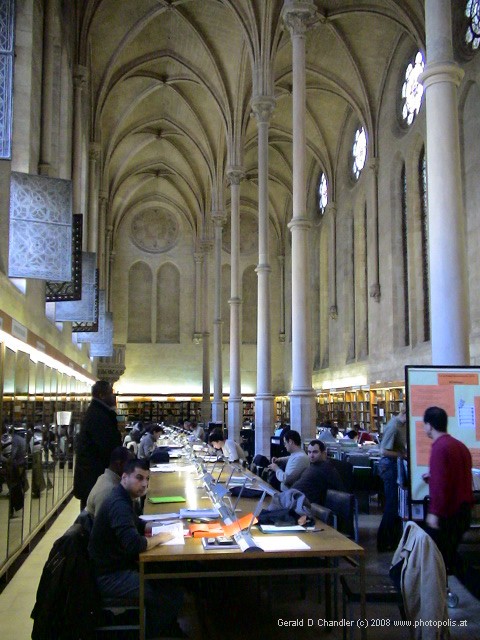
Arts et Métiers Library |
Les Marais (or Marshes) extend from the Seine about a kilometer north. The southern half of this was once truly swamp and only filled in in the late middle ages. The northern half at one time was crowded with religious communities. One of these was appropriated during a period of anti-clericalism and became the site of one of France's greatest engineering schools, Arts et Métiers (roughly translated: Skills and Trades).
The former church of the monastery became its library. It's not the first time we've seen such a change of purpose as we saw something similar in Patzcuaro, Mexico. The Mexican building was largely painted over in the interior. But although the idea is not that original, it still seems very appropriate. Perhaps it seems so because the first universities in Europe were church-based and so scholars and gothic architecture seem to go together.
While we regret the expropriation and destruction we both wish that we had been able to study in such surroundings Would the beauty of the building have been a distraction? Perhaps — and perhaps not. One gets used to beauty as well as ugliness. Gerry studied on a rather lovely campus, that of Caltech in Pasadena, California. Jan, on the other hand, studied at a university that had no campus at all when she attended. University buildings were scattered throughout the center of Bradford and included leased space like the three floors of the Wardley Center where the Modern Languages Department was housed. The ground floor of said building held an ice-rink, the music from which entertained the students on a regular basis.
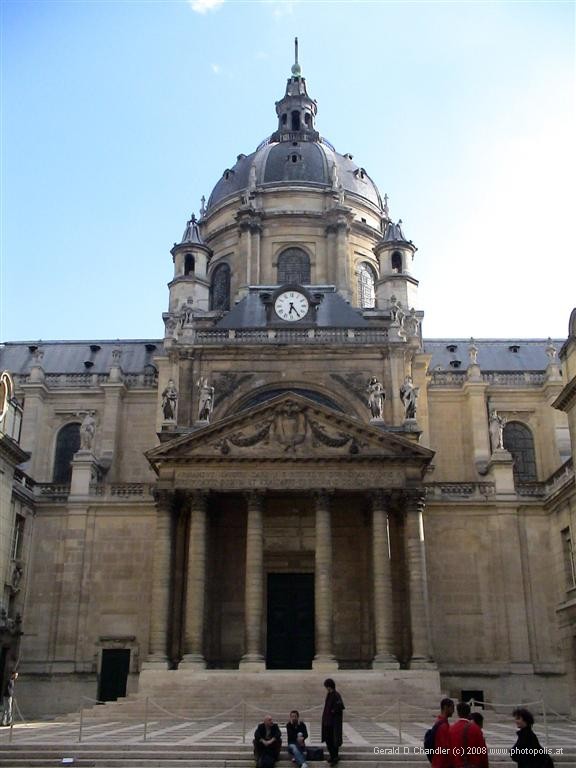
Sorbonne |
We have the inverse of our usual situation here: It looks like a church but never was. This is the main building of the Sorbonne, which could, of course, be called a temple of learning.